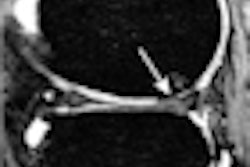
LONDON (Reuters), Jul 1 - Spending on healthcare in OECD countries is rising faster than economic growth, piling pressure on budgets already hit by the 2008-2009 recession, according to data published on Tuesday.
And healthcare costs are likely to continue rising as populations age, technology improves, and public expectations grow, the Paris-based Organization for Economic Co-operation and Development (OECD) said in a report.
"Given the urgent need to reduce their budget deficits, many OECD governments will have to make difficult choices to sustain their healthcare systems: Curb the growth of public spending on health, cut spending in other areas, or raise taxes," the OECD Health Data 2010 report said.
The biggest spender on health was the United States, which spent 16% of its national output or $7,538 per person in 2008 -- the latest year for which full figures are available. This was well over double the $3,000 per person average of all OECD countries.
The next biggest spenders, Norway and Switzerland, spent much less than the United States per capita, but still spent around 50% more than the OECD average.
For a graphic on 2008 healthcare spending in OECD countries, go to http://graphics.thomsonreuters.com/10/GLB_HLTH0610.html.
Coupled with the effects of recession, rising costs have pushed health spending as a proportion of gross domestic product up to 9.0% in 2008 from 7.8% in 2000, the report said, and that trend is set to continue.
"Factors pushing health spending up -- technological change, population expectations, and population ageing -- will continue to drive cost higher in the future," the report said.
In Ireland, the percentage of gross domestic product (GDP) devoted to health increased to 8.7% in 2008 from 7.5% in 2007, partly due to a sharp contraction in economic output, while in Spain, it rose to 9.0% from 8.4%.
"New medical technologies are improving diagnosis and treatment, but they also increase health spending," the OECD report said.
The data showed rapid growth in the supply and use of computed tomography (CT) scanners and magnetic resonance imaging (MRI) units used to diagnose illness, with the number of MRI units more than doubling on average across OECD countries to 13 machines per million population in 2008, up from six in 2000.
The number of CT scanners rose to 24 for every million people from 19 in 2000.
The number of MRI units per capita is much greater in Japan, the United States, Italy, and Greece than in other countries, and those countries, plus Australia and Korea, also have more CT scanners.
The OECD noted that rapid growth in use of diagnostic scans over the past decade in the United States had raised concerns that some imaging may not be useful or cost-effective.
"To reduce unnecessary procedures and cut costs, many OECD countries are trying to promote rational use of costly medical technologies," the report said.
By Kate Kelland
Last Updated: 2010-06-30 18:09:59 -0400 (Reuters Health)
Related Reading
U.S. scores dead last again in healthcare study, June 24, 2010
GAO numbers overstate growth in medical imaging, May 4, 2010
U.S. children's hospitals reduce CT exam volume, April 29, 2010
GAO takes on self-referral study, April 29, 2010
Medicare cancer imaging grows at twice rate of overall expenses, April 27, 2010
Copyright © 2010 Reuters Limited. All rights reserved. Republication or redistribution of Reuters content, including by framing or similar means, is expressly prohibited without the prior written consent of Reuters. Reuters shall not be liable for any errors or delays in the content, or for any actions taken in reliance thereon. Reuters and the Reuters sphere logo are registered trademarks and trademarks of the Reuters group of companies around the world.


















